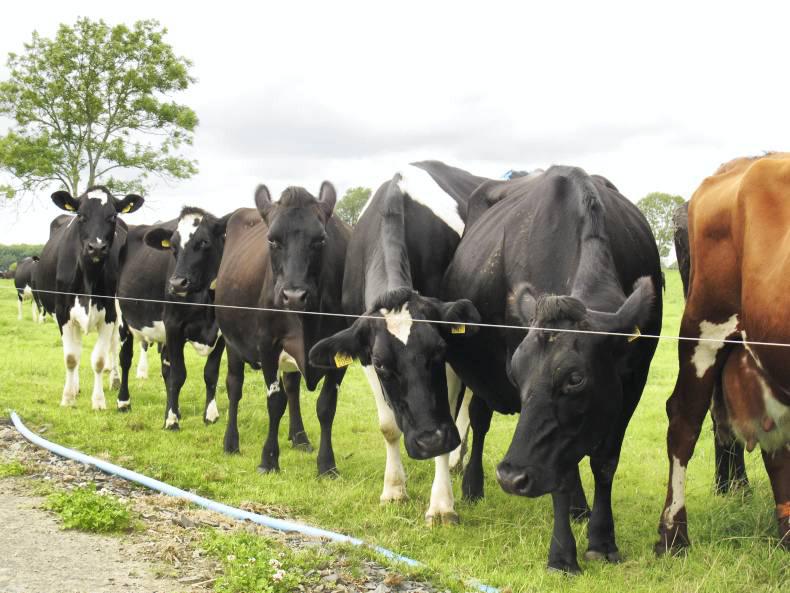We have long since offered the advice that the best sires of any breed should rise to the top of the ICBF EBI list irrespective of breed.
Genomics, however, has given an advantage to one breed over the other. Genomic information is available for black and white sires only, and not Jersey sires.
Despite the Genomics handicap, the Jersey crossbred cow seems to be performing as good as the black and white herds.
Of course, this doesn’t take into account any perceived or actual difference in beef output but, as former Dawn Meats chief executive Dan Browne once said: “Dairy farmers must do what is profitable for their own business and meat factories can look after themselves.”
It is also important to point out that the black and white breed hasn’t benefitted from heterosis or hybrid vigour (the beneficial effect of crossing two different parent breeds) which EBI cannot capture or measure.

Looking at the data, milk price is higher for the Jersey cross herds, 41.3c/litre compared with 38.4 c/l for the black and white herds. Milk solids production per cow is less in the Jersey cross herds – 362kg versus 371kg/cow on average with the black and white herds.
What we don’t know
Now that’s as far as the ICBF statistics go. Andrew Cromie tells me he will update this dataset with more results very soon. The dataset is incomplete in that we don’t have enough information to make clear conclusions. The ICBF doesn’t collect any data on feed rates or stocking rate. One could assume that on average across this relatively large number of herds there might not be that much difference.
We also don’t know anything about the age of the herds. You would expect given the herd size difference that the Jersey crossbred herds would be younger and hence mature milk performance might not be as good as those herds with older cows. Given the herd size difference, the Jersey cross herds are also doing a lot more walking to and from parlours, which uses energy and reduces production.
There is also no measure of efficiency within either breed presented. Research data suggests a 10% improvement in milk solids per kilo of feed with crossbreds over Holstein Friesian purebreds. This has been shown in the international research and Irish research due to increased feed intake capacity and reduced maintenance requirements of crossbreds (70kg lighter). In terms of reproduction, Irish research work would suggest that with both breeds at a high EBI (€200), there are no major differences evident.
Herd size is almost double (175 v 91 cows) for the 223 Jersey crossbred herds compared with the 595 black and white herds. The performance of the 595 black and white herds outlined are the average of 5,950 black and white herds in the database.
The implications
This article is not about whether EBI is working or not. I believe it is working and genomics is a tool that has pushed better black and white sires to the top of the EBI list faster and removed poor genetic black and white sires from the list.
My issue is – if genomic information was available on Jersey sires, where would they rank and where would the performance of the Jersey cross herds be then? Essentially, genomic information on black and white sires has been available for the last five years. No genomic information is available, nor will any be available, on Jersey sires and hence sires are pushed well down the active bull list.
The further a sire is pushed down the EBI list the further away the sire is from the best ICBF advice, which is to use a team of the highest EBI sires that are available. ICBF has talked about creating a training population for the Jersey breed and hence gathering enough data to get genomic values, but so far nothing has been delivered. Other issues have taken priority status, given the limited resources.
Andrew Cromie makes the point that multi-breed genomics is a major technical challenge for the industry and creating a second breeding programme for another breed is a major decision that needs to be considered carefully. One issue that Andrew has with the data above is that there is a difference in the EBI value between the two breeds of €28 and, ideally, they should be the same when comparing.
Bottom line – independent research is showing Jersey crossbred herds are more profitable. They are delivering €200 per cow extra profit per lactation. For some it will take 15 to 20 years to breed better milk and fertility performance into existing black and white herds using the best black and white sires available. Using the best Jersey sires available could make much more sense and put more profit in farmers’ pockets much quicker.
The ICBF needs to work with Teagasc to sort this data anomaly sooner rather than later. We can’t have independent research saying one thing, the ICBF saying another, and both supposed to be working in the best interests of dairy farmers. It’s not a case of one breed or the other because we need both parent breeds to create crossbreds. However, farmers need to be presented with the right information to choose the best of both breeds.






 This is a subscriber-only article
This is a subscriber-only article






SHARING OPTIONS: